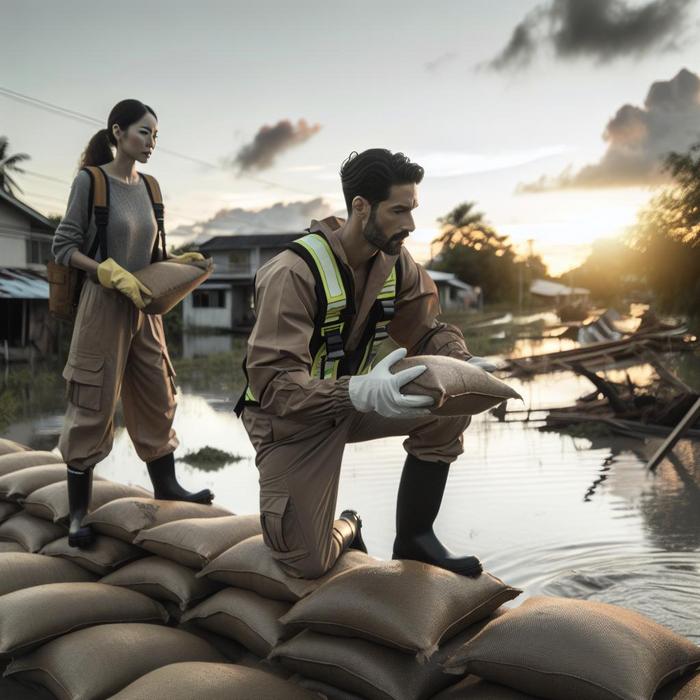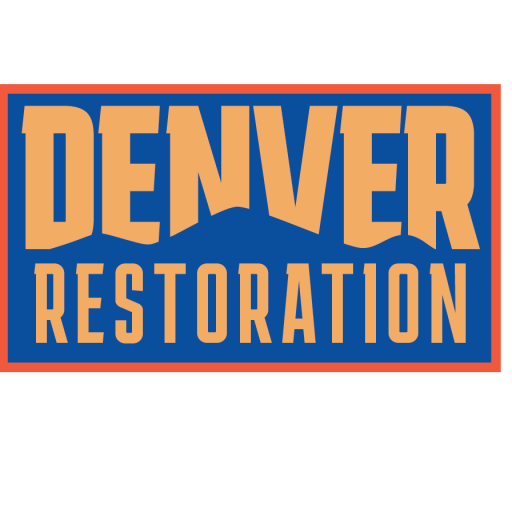Understanding the Aftermath: Post-Flood Actions for Effective Recovery
Navigating the aftermath of a flood is as vital as the immediate response. It is during this period that the extent of the flood damage is fully realized and recovery strategies are initiated. Your post-flood actions can significantly influence how efficiently you recover and the time it takes to get back to normalcy.
It’s important to remember that the process will require patience, resilience, and the right guidance. In this context, the following measures will offer some insight into how to deal with flood recovery effectively.
Safety First: Ensuring Health and Environmental Safety After a Flood
The first rule of thumb after a flood is safeguarding your health and well-being. Floodwaters carry a host of harmful pollutants and bacteria, causing a high risk of waterborne diseases. Wearing protective gear as you inspect the damage is crucial.
Similarly, potential risks of electrocution due to waterlogged electrical systems cannot be overlooked. It is recommended to turn off the main electrical supply until a professional has deemed it safe.
Moving on to the environmental aspects, dealing with water stagnation is an immediate concern. Stagnant water serves as a breeding ground for pests and mosquitoes. By ensuring the water is drained ASAP, you mitigate the risk of disease outbreaks.
To prepare adequately for such circumstances, there are several guidelines you can follow from trusted sources. Resources such as Pinellas County’s safety tips for flood recovery and Patterson City’s flood response guide offer comprehensive instructions on ensuring optimal safety during recovery.
Damage Assessment: Laying the Groundwork for Restoration
After securing the property’s surroundings and ensuring safety, the next step in post-flood actions is damage assessment. This task primarily involves identifying the extent of the damage caused by the flood. From structural damage to the ruin of personal belongings, this examination will provide a clear picture of the impact.
Furthermore, a thorough damage assessment is crucial for successful insurance claims. As this process can be complex, it’s often beneficial to leverage professional help. In this context, resources such as our water damage cleanup guide can provide useful insights.
Restoration Measures: Utilizing Modern Techniques and Equipment
Once the damage is assessed, your next post-flood action is to initiate the restoration process. This phase involves several tasks, such as water extraction, drying, dehumidification, and disinfection, among others.
One crucial aspect of restoration is leveraging modern techniques and equipment. The use of advanced tools can enable faster and more efficient recovery, minimizing both the time and the cost involved in restoration.
Securing Compensation: Ensuring Insurance and Legal Compliance
An aspect often overlooked during the flood recovery process is insurance and legal compliance. Having a sound understanding of your insurance policy, the coverage it provides, and the process for filing claims can greatly smoothen your recovery journey.
Remember, thorough documentation is critical. The more evidence you can provide of your loss, the higher the likelihood of a successful claim. A professional restoration service can also serve as an ally during this process as they can offer experienced advice and support.
Looking Ahead: Proactive Measures for Future Protection
While dealing with the immediate aftermath is indeed critical, it’s also essential to keep an eye on the future. Ensuring your property is better prepared to deal with such disasters prevents severe damage and aids speedy recovery.
This forward-thinking approach includes measures like installing flood-resistant materials, raising electrical systems, waterproofing basements and more. You can also make use of community resources like the National Weather Service’s guide on post-flood safety for comprehensive measures to ensure future safety.
Remember, flood recovery is a journey that can be navigated successfully with the right knowledge and resources. By understanding the importance of each post-flood action outlined here, homeowners can turn a stressful circumstance into a manageable situation and contribute to the overall resilience of their property and community.
Ensuring Effective Communication: Dealing with Contractors, Insurance Agents, and Legal Bodies
In the aftermath of a flood, keeping clear lines of communication with all involved parties is critical. This means promptly and accurately conveying the extent of the damage to your restoration experts, insurance agents, and, if needed, legal representatives. You also need to understand clearly the information they provide. This two-way communication process can be complex but is necessary to ensure a smooth recovery process.
Several considerations come into play. For instance, discussing with restoration experts the specific methods and equipment to be used for restoration, understanding your insurance coverage, and staying informed about the legal implications of your situation.
Sanitization: The Key to a Healthy Home Post-Flood
Even after the water is drained, and visible residue removed, there can still be harmful contaminants lingering in your home. Thorough sanitization of the house and household items is crucial to avoid health risks such as mould growth and harmful bacteria. This can be a daunting task, and professional help may be necessary to ensure your home is entirely safe for habitation.
Depending on the severity of the flood damage, this can involve several tasks, including disinfecting surfaces, cleaning clothes and furniture, and checking for mould growth in hidden areas. There is comprehensive guidance available on how to recover from flooding at UK Government’s recovery guide.
Crisis Management: Dealing with the Unexpected
Flood recovery is a process filled with uncertainties. It’s not uncommon to uncover additional damages during the restoration process or face unexpected roadblocks. Here, your crisis management skills come into play. These skills can range from making quick decisions about unforeseen damages to managing the psychological stress of the situation.
Keeping a calm mind, getting adequate professional support, and having a flexible approach can help you navigate this phase effectively. After all, flood recovery is not just about restoring your property but also about maintaining your mental well-being during these challenging times.
Maintaining Documentation: The Backbone of Successful Insurance Claims
When it comes to dealing with insurance claims, maintaining a comprehensive record of the damages is invaluable. This should include pictures and videos of the damaged areas, a list of destroyed items, and receipts for any out-of-pocket expenses. Proper documentation provides concrete evidence for insurance claims and can increase your chances of a favourable outcome.
This process can be overwhelming, particularly amidst dealing with the trauma of a flood. Therefore, it may be beneficial to enlist the help of a professional service who can handle this task, leaving you free to focus on other aspects of recovery.
Returning Home: Know When It’s Safe
One of the most crucial factors to consider post-flood is when it’s safe to return home. This is typically determined by several factors, including the completion of restoration and sanitization, safe electricity and water supply, and the absence of structural damage.
A report from FEMA provides several pointers for homeowners looking to move back into their homes after a flood. These include tips on ensuring safety, spotting potential issues, and knowing what professional assistance might be needed.
Rebuilding and Recovery: A Proactive Stance Towards Future Incidents
Flood recovery doesn’t end with restoring your home to its pre-flood condition. It’s also about ensuring a more resilient structure that can weather future disasters with minimal damage. Some steps towards this goal include rethinking the home’s design, using water-resistant building materials, and implementing prevention strategies such as appropriate landscaping and drainage systems.
Keeping a proactive approach can significantly reduce the impact of future floods. Furthermore, this stance will not only safeguard your property but also contribute to the resilience of your entire community.
In conclusion, while the process of flood recovery can be daunting, understanding the importance of each post-flood action can make it manageable, with homeowners and businesses equipped to turn a challenging situation into a journey towards resilience and recovery.
Enlisting Professional Help: Why It’s Crucial
While it’s possible to handle some aspects of flood recovery on your own, professional help can expedite the process and ensure a more comprehensive recovery. Professionals in the field are equipped with specialized knowledge, state-of-the-art equipment, and experience handling similar situations.
Therefore, enlisting the help of professional restoration services can greatly reduce your stress, allowing you to focus on personal recovery and the well-being of your family.
Remember, each of these steps towards recovery contributes to resilience. The knowledge shared here, from initial safety measures to future protective actions, can help you and your community bounce back stronger after a flood.
Turning Recovery into a Community Effort
Flood recovery doesn’t have to be a lonely endeavour. Engaging with your community can not only provide emotional support but also practical benefits. Coordinating clean-up efforts, sharing resources, or simply providing emotional support to each other strengthens your community’s collective resilience.
Moreover, communities can work together to implement larger-scale preventative measures that benefit everyone. Whether this is lobbying for better flood defenses, coordinating community-wide drainage improvements, or simply sharing knowledge and experiences to better prepare each other.
Final Reflections
Flood recovery presents numerous challenges, but with the right knowledge and resources, it becomes a manageable task. The post-flood actions we’ve discussed here are all integral parts of this recovery process. By adhering to these, homeowners, businesses, and communities can reduce the negative impacts of flooding and bounce back stronger than before.
Remember, the journey doesn’t end with recovery. By taking proactive steps towards future protection and resilience, we can transform a challenging experience into an opportunity for growth and strengthening. Whether it’s at an individual, property, or community level, each act of resilience contributes to safer and stronger futures for all.

